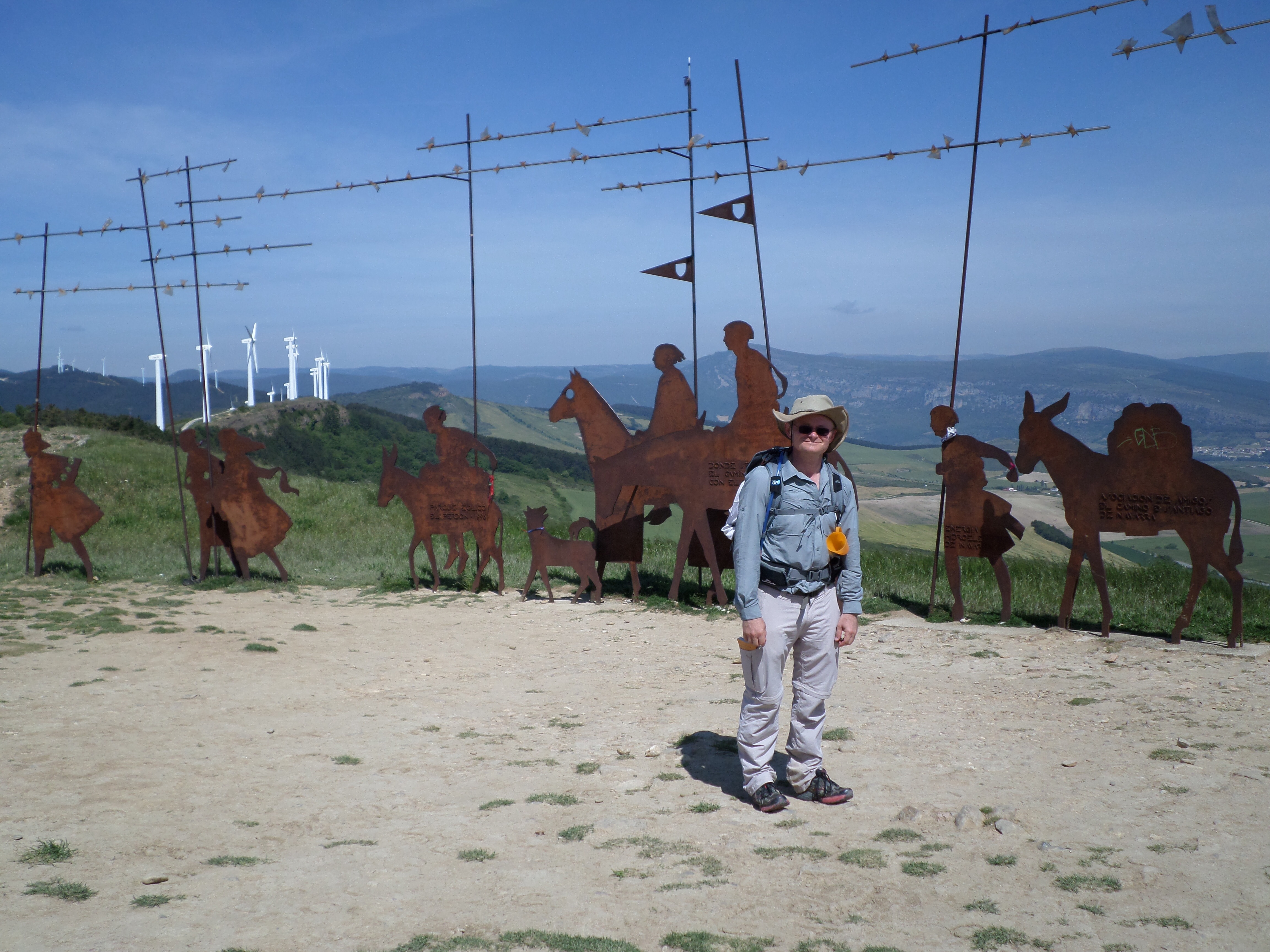 Mark Schipp concludes his story …
Mark Schipp concludes his story …
Inspired by the experiences of many other walkers from our group who have done the pilgrimage (some more than once!), I walked the Camino in June. I had been planning to do the walk to mark my 50th birthday but once I started to think and read about doing the walk I had to do it this year.
From Paris I took a train down to Bayonne where I waited a few hours before catching a bus to the traditional starting point of St Jean Pied du Port but, as I got off the train, another passenger saw that I was a pilgrim and he offered to drive me in his car to St Jean because he had been a pilgrim himself. My first experience of “the Camino provides” occurred before I had even started!
I had never been to Spain before (and do not speak Spanish) so was not quite sure what to expect. The countryside varies from flat dry agricultural land to beautiful green rolling hills and dark forests carpeted with ferns and mosses. I was fortunate to have good weather, largely overcast, with a few warm days and a couple days of rain. The worst parts of the walk were one night of bed bugs and getting bitten by a dog one day — but all Camino stories include bed bugs and dogs! I had a real sense of achievement once I had crossed the Pyrenees on the first day. I met many other pilgrims (some of us kept together, some we saw only for a day or two) and I was amazed at the size and ornate beauty of the churches in what are sometimes quite small towns.
I was very impressed with the friendliness of the locals along the route and I always found people going out of their way to provide directions and assistance. The path cuts through a number of villages and in some cases right through farms so you have a good opportunity to see rural life in Spain — always interesting to a veterinarian from the Agriculture Department! I greatly enjoyed seeing farmers with their flocks of milking sheep.
I arrived in Santiago after 28 days with some time to spare so I walked on to the coast and visited the towns of Finisterre and Muxia. In ancient times, as today, pilgrims carried back home a scallop shell from one of these towns as a sign of having successfully completed their pilgrimage.
To prepare for the Camino I increased my regular walking around Canberra and a few times I walked with my backpack loaded up with weights. A good piece of preparation was doing the St Clements pilgrimage from Yass to Galong over three days in April with others from my walking group. Most guidebooks recommend taking about 33 days to cover the almost 800km from St Jean to Santiago but I walked a little faster than this, averaging 30km a day. Initially I was not confident I could cover the distance in the time I had available. Later I found that on some afternoons there was no accommodation remaining where I had planned to stop and so I had to walk on further. Some days where I had planned to walk only 25km I ended up walking 40km.
People walk the Camino for a variety of reasons. Some are true pilgrims carrying out a religious activity, others are interested in the exercise, or the sense of achievement, or in meeting new people. Some walk to have an extended period of time for free thought, or to recover from divorce or bereavement. I found it difficult to articulate why I was doing the walk when I was struggling with blisters, interrupted sleep or loneliness, but having completed the walk, I feel a real sense of accomplishment and confidence to do something similar in the future.

